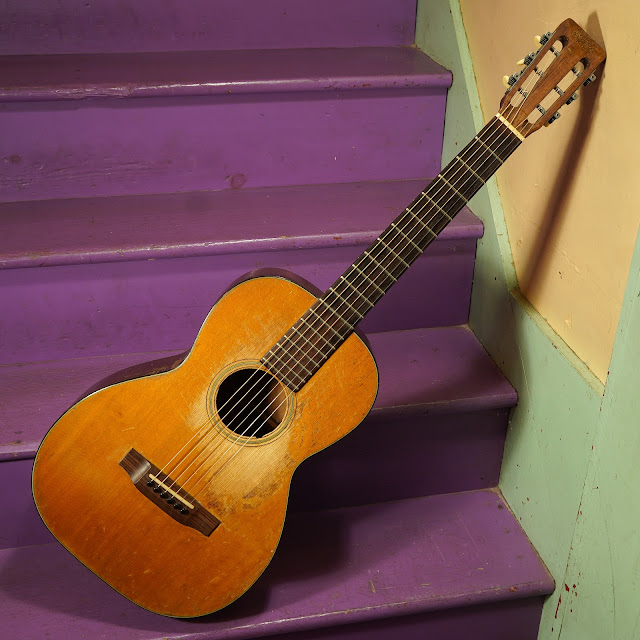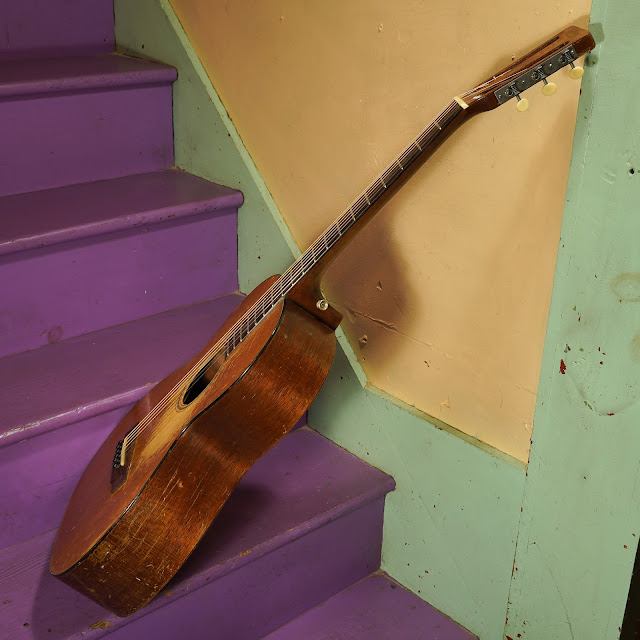1961 Martin 0-16NY Flattop Guitar
A friend of mine lucked-out and got this guitar at a good price. I mean -- it is quite beat-up, but it's a '61, it's light as a feather, and it has so many miles on it that you know it sounds great just looking at it. And does it sound great? Yes... yes it does! Sorry I didn't have time to shoot a video...
For those not in the know, the 0-16NY ("New Yorker") is a '60s attempt at a repro of their late '20s and early '30s 12-fret 0-18 models -- more or less. They're built pretty-much just as light and share the same structural stability issues, but boy do they sound nice and warm and sweet. There are a few concessions to modernity -- it has no dots on the board's face (classical-style), the neck is slightly chunkier and more C-shape than the originals (plus there's a T-bar reinforcement rod in there), and the binding is tortoise rather than rosewood and the fretboard and bridge are rosewood, too.
I had to give this one a neck reset, some frustrating fret seating/level+dressing working, fit new tuners (StewMag Golden Age repros -- they're nice!), and install a new bridge. Luckily, all the bracing was tight and in good order. Unfortunately, due to previous damage under the footprint of the original rectangular bridge (see pics way down in this post), I decided to fit a "belly" bridge rather than the original. This gives more purchase on the top and it also allowed me to get a wider, easily-adjustable, drop-in saddle slot on there. This is going to be a gigging instrument (I already fit a K&K pickup inside), so practicality is the first concern. It's also beat-up enough that practicality can be its first concern.
Post-work, it plays beautifully and has the sound. It's a little woody and airy but very warm and sweet and, of course, it has a ton of charm.




















Comments